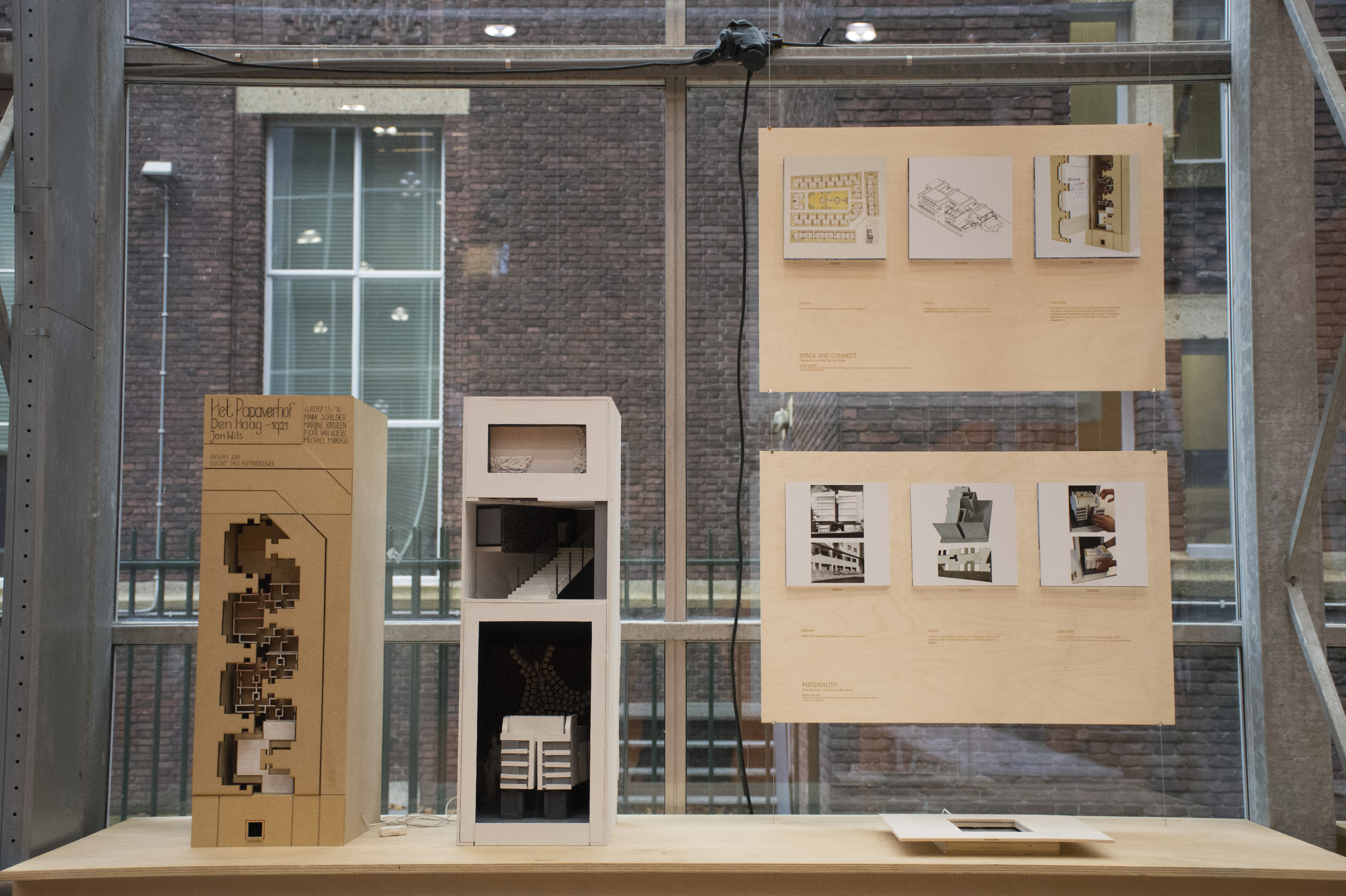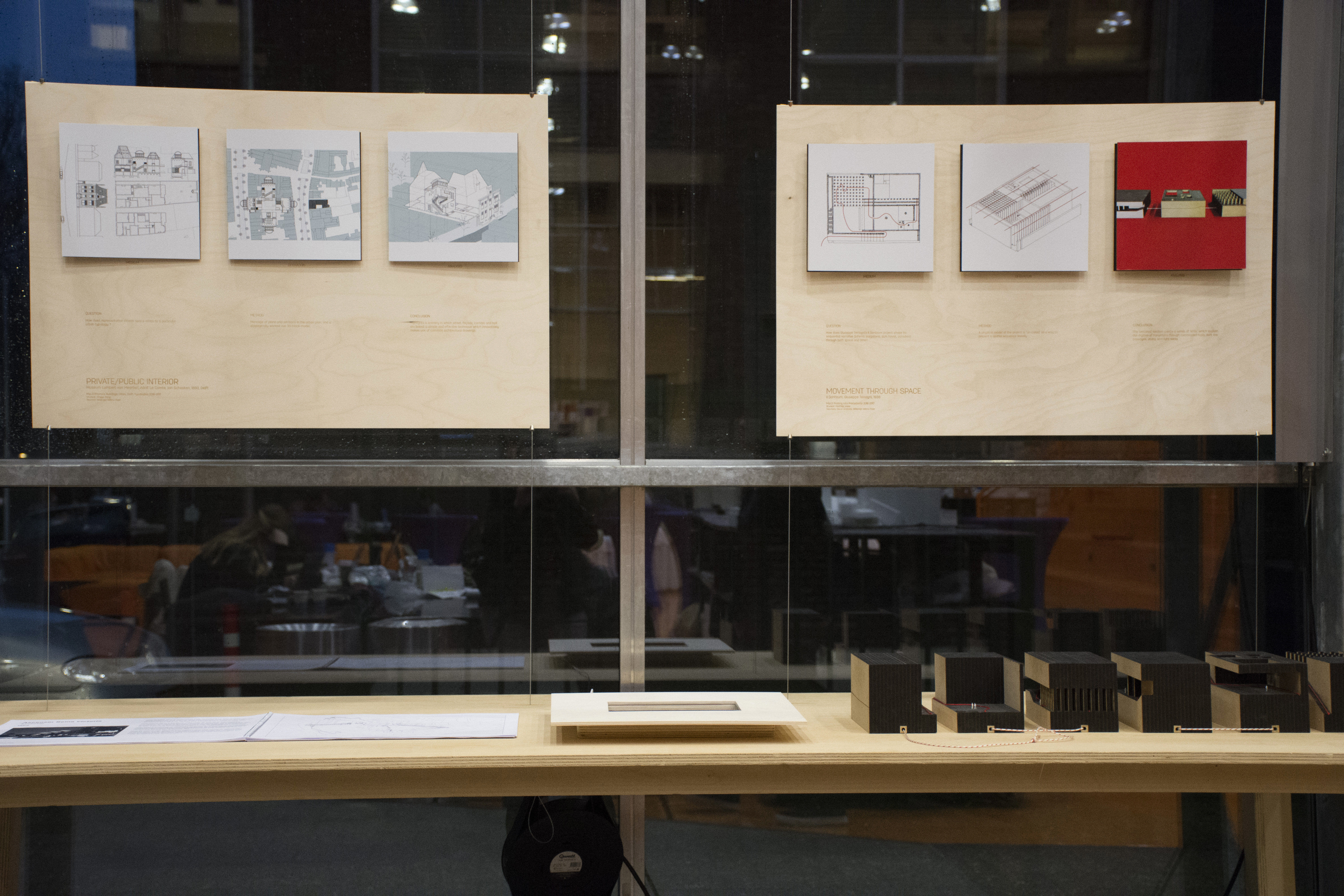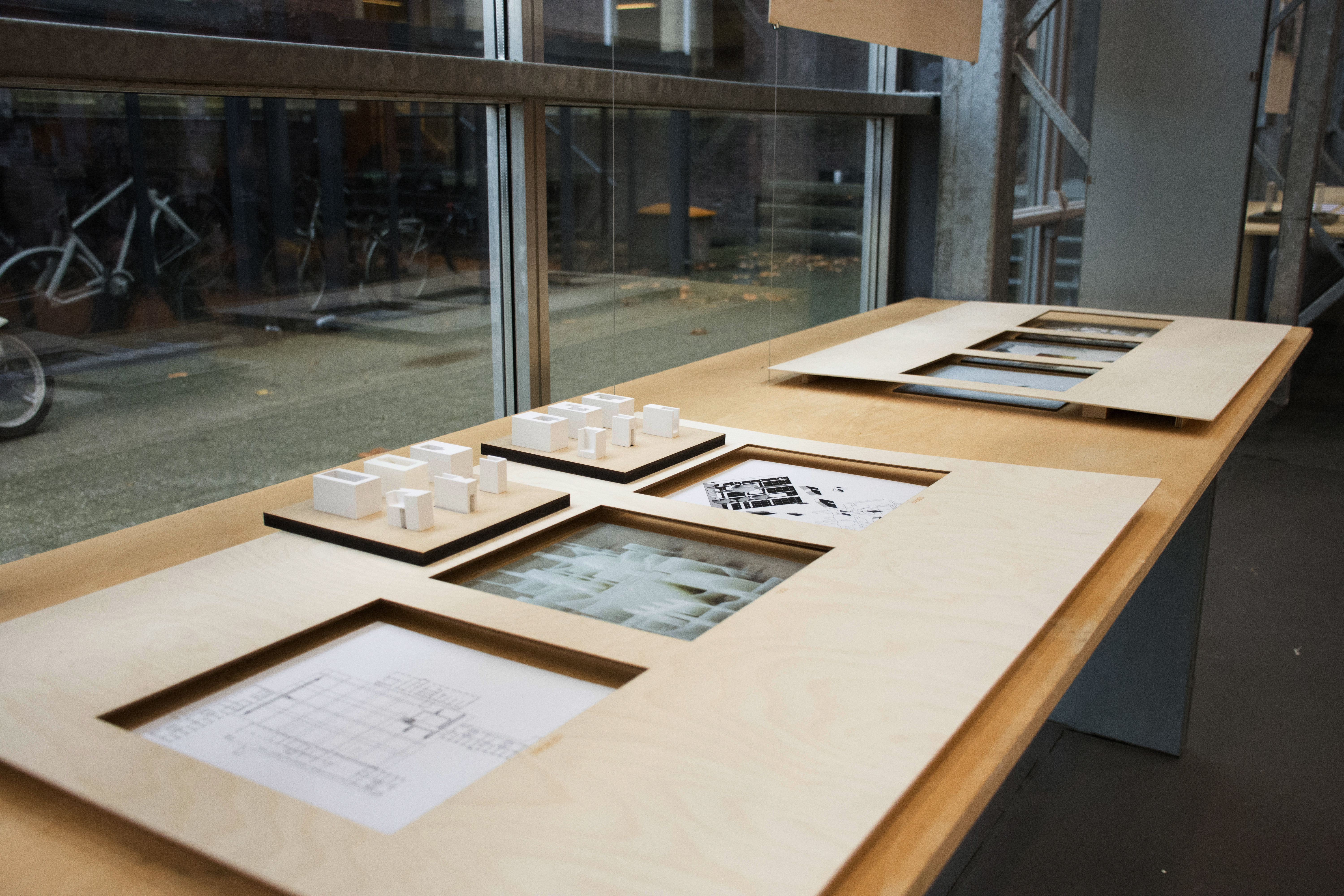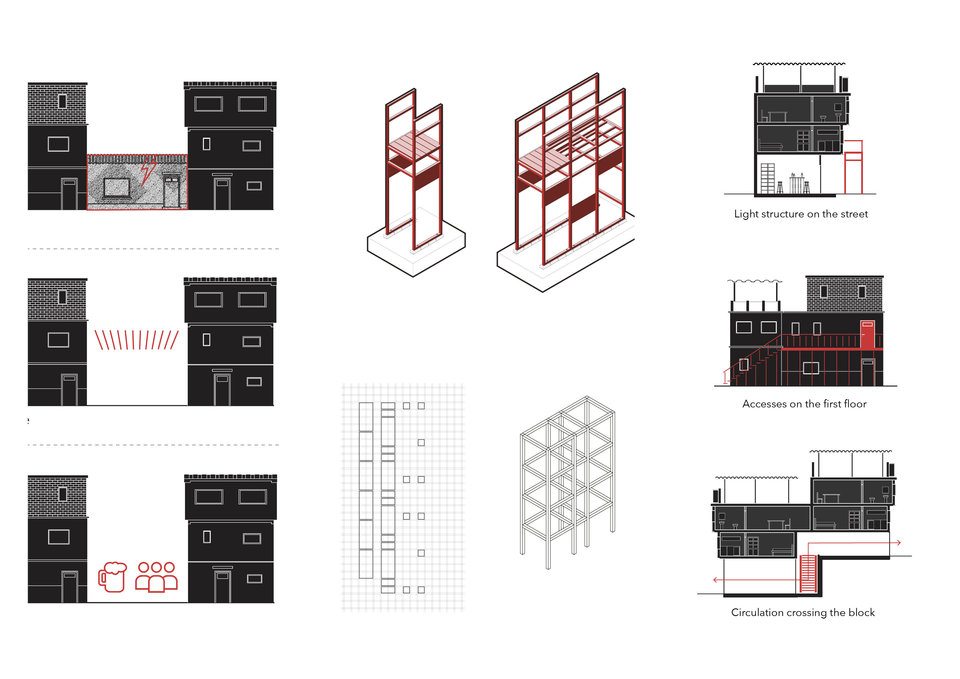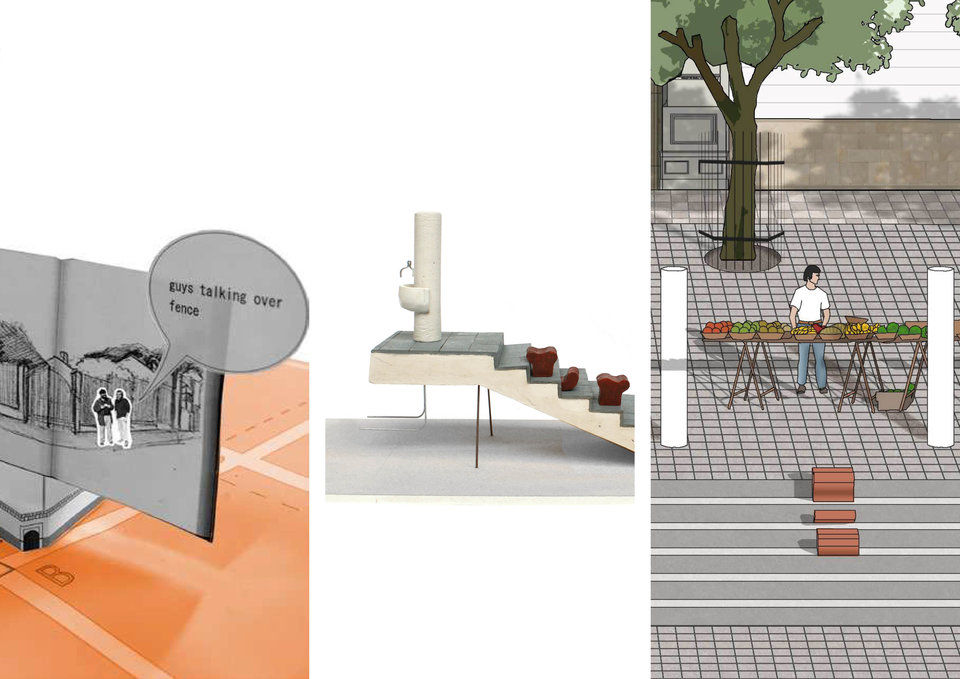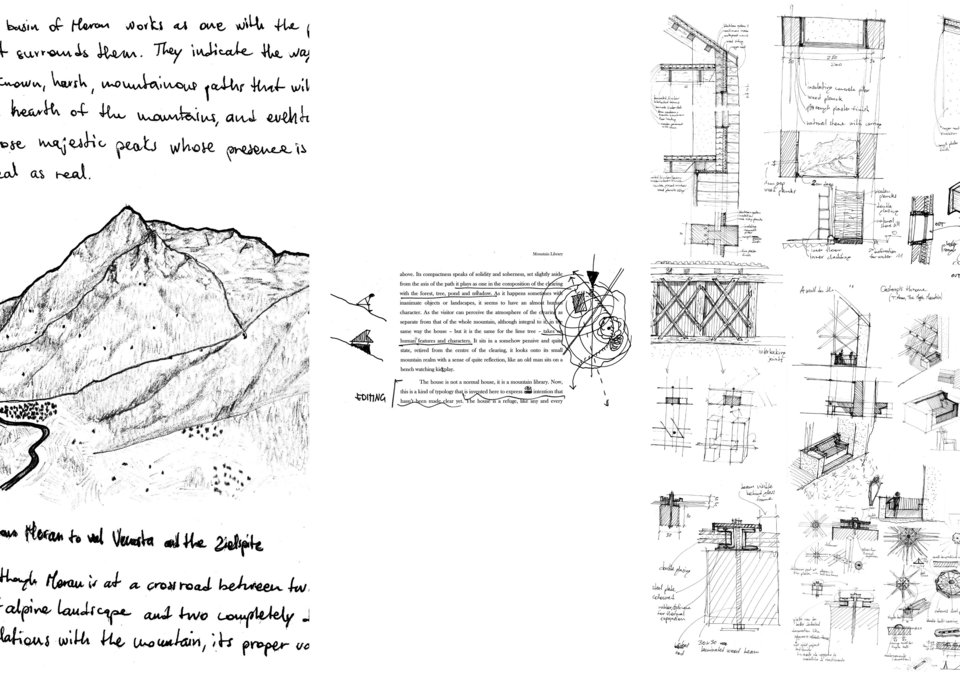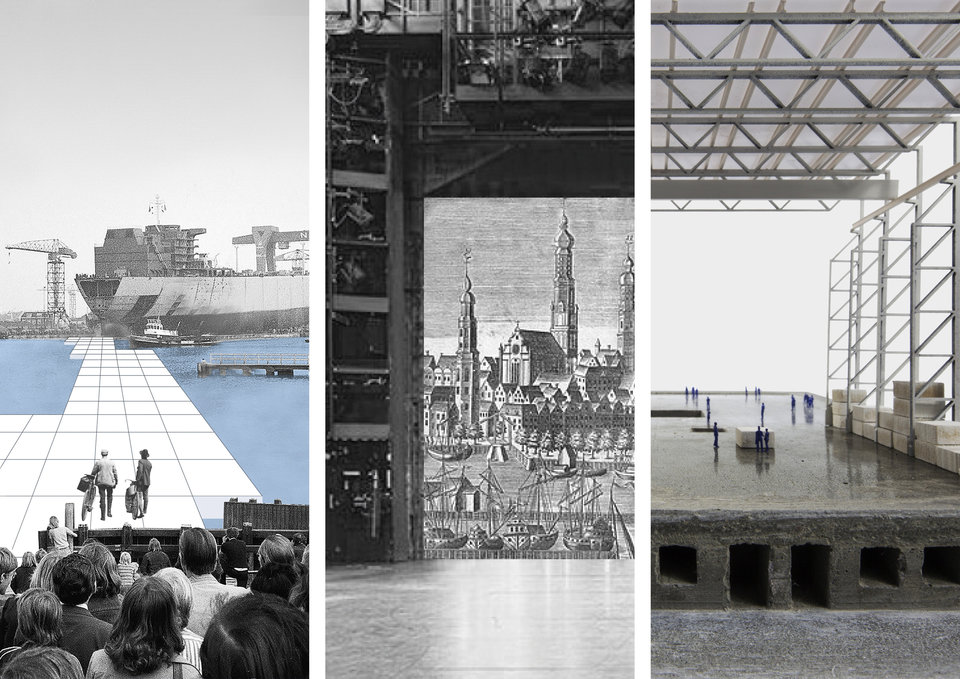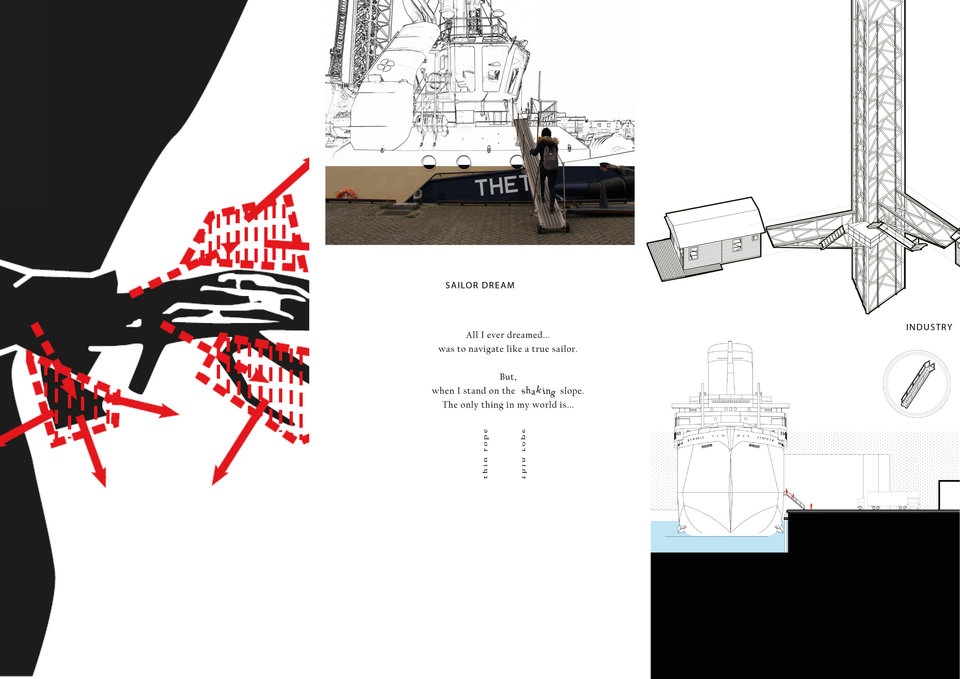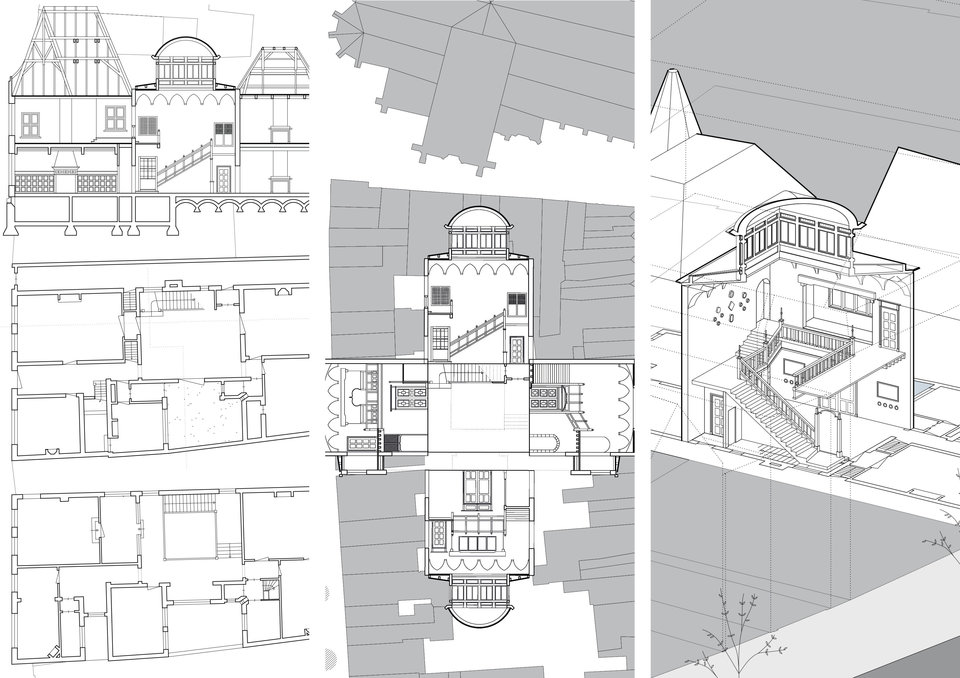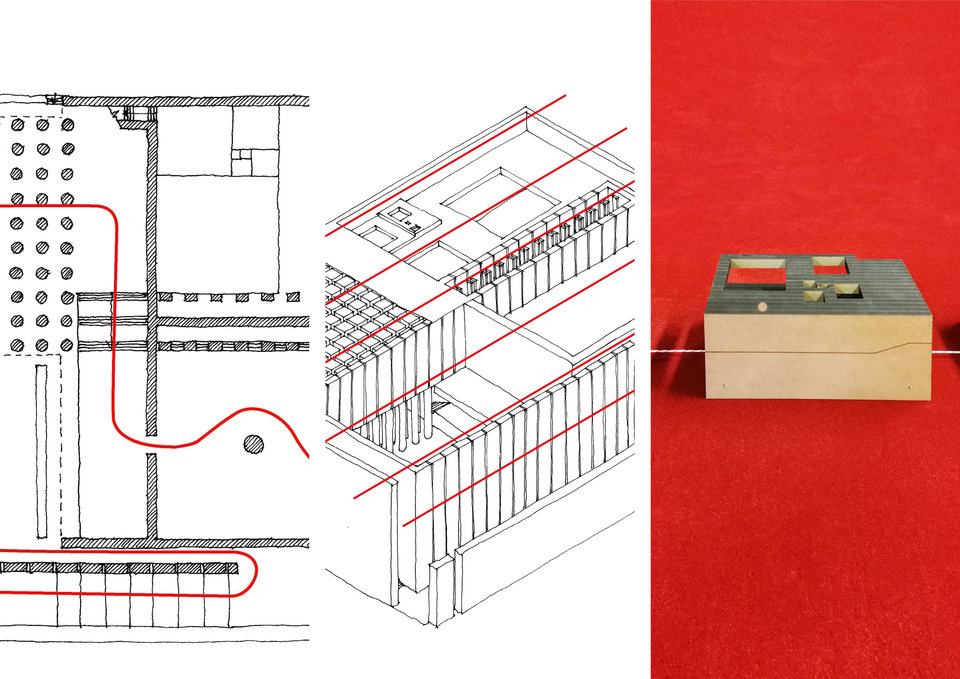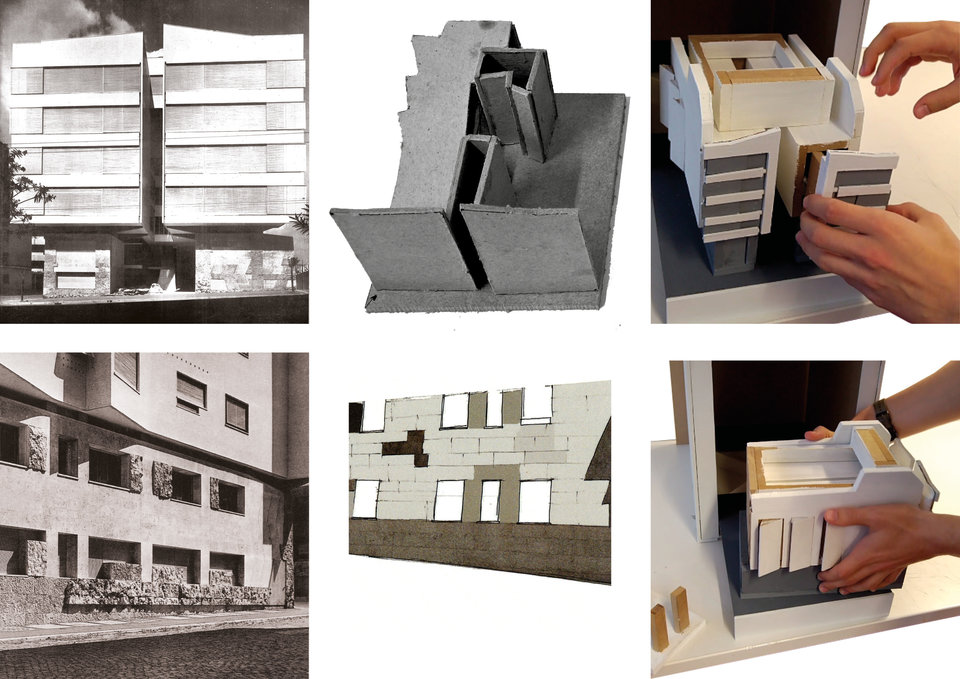Tools of the Architect Exhibition
Methods and Analysis
At the Chair of Methods and Analysis we try to learn about architecture and the built environment in two interrelated ways:
On the one hand by studying and testing the tools and procedures – the methods – that have been, are being, or can be used by architects in the production of the built environment.
On the other hand by studying parts of that built environment critically or systematically; analysing them, in order to understand some of the components, logics, and processes that could further inform them.
Based on these two premises, we have assembled this small selection of projects which represents our collective interests and ambitions. All of these projects were developed by students between 2014 and 2017, in courses offered by the Chair at the Bachelors and Masters levels of education.
A threefold structure
Each of these projects is presented as a triptych.
The first panel of each triptych represents an architectural question. This question has been defined or formulated as the result of analysing a specific situation in a particular way.
The second panel represents a method: tools and procedures that appear useful to confront that particular question.
The third panel represents the confrontation of that question and method. We understand this result not only as a project, but as the architectural knowledge produced in the process, or what we have learned.
The condition to learn about architecture
As these student projects illustrate, the formative process from question to result spans from the Delft tradition of plan analysis, to the definition of distinct architectural positions, based on the acknowledgment and study of architectural epistèmes – or broader systems of architectural knowledge.
Despite their different approaches or degrees of complexity, these projects testify that our ambition to learn about architecture is strongly based on a critical and rigorous analysis of the built environment; and, on our study and use of simple and reliable architectural methods, such as drawing writing and modelling.
We claim that operative interrelations between methods and analyses establish the condition to learn about architecture.
Curatorial Images

